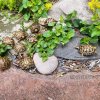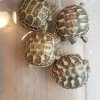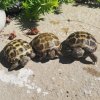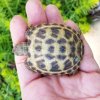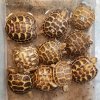I got my RTs out of brumation on March 15, and they have hit the ground running. All eating and active.
Look at my beautiful CB Russian tortoises. They range from 2.5-8 years old, 250g - 1100g. The biggest girl hatched from my first clutch ever, and she laid 13 eggs last year.
I originally raised 9 CB babies, but in spite of incubation temperature I ended up with 5 males. 3 of those males were hatched by a friend, and it turns out she didn't use a digital thermometer.
I kept all 4 females, and 2 of the males.
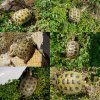
Look at my beautiful CB Russian tortoises. They range from 2.5-8 years old, 250g - 1100g. The biggest girl hatched from my first clutch ever, and she laid 13 eggs last year.
I originally raised 9 CB babies, but in spite of incubation temperature I ended up with 5 males. 3 of those males were hatched by a friend, and it turns out she didn't use a digital thermometer.
I kept all 4 females, and 2 of the males.

